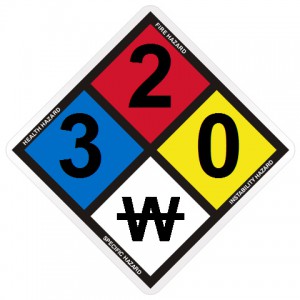Resources
Our resources page delivers an array of informative pieces, from OSHA inspections to facts and figures on workplace safety. This material helps advise and inform employers and employees about workplace safety and industry regulations. Many of the resources include pieces about preserving health, safe conditions, and morale through signage, such as biohazard or lifting signs; you’ll also find information about laws, rules, and ratings that help enforce workers’ well-being and ensure OSHA safety compliance.
Regulations Handling Hazardous Materials Workplace Safety
Regulations
The Process of OSHA Inspections
OSHA sets national standards for safety protocol. Learn about the process of their inspections with this short and easy-to-read guide.
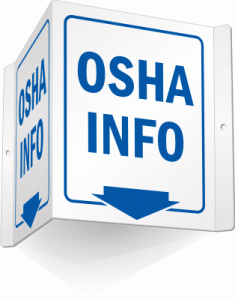
Signage Requirements in the US Mining Industry
What is the appropriate signage when it comes to mining? This article lays out the federal health and safety requirements for the mining industry including the need for warnings that mark hazards.
California Prop 65 Rule: A Quick Guide to Chemical Exposure Warnings
What is the California Prop 65 Rule? This quick guide explain the rule’s role in safeguarding health and safety when it comes to perilous substances.
What is the NFPA system? What are NFPA ratings criteria? What other hazards, besides fire, does the NFPA regulate and help prevent?
How to Conduct a Pre-Start Forklift Inspection
Go through all the steps of forklift inspection before operating. Get your pre-start forklift inspection here.
What are Confined Spaces?
Falls, dangerous fumes, temperature extremes are just few of the hazards posed by a confined space. Carefully read all the facts about confined spaces here.
Choose the Right Header
Not sure whether your sign should say “Danger” or “Warning,” or something else. Our decision tree helps you choose the right header.
Hints on Designing an Effective OSHA Warning Sign
We give you eight steps to designing effective OSHA safety signs for your facility.
What Safety Sign Design to Choose?
Compare OSHA and ANSI designs to see which one works out best for you.
ANSI Definitions for Danger, Warning, Caution or Notice Signs
Find out whether your sign will best serve its purpose if it has a “Danger” “Warning” “Caution” or a “Notice” header.
Types of Fire Extinguishers
Do you know not all kinds of fires can be put out by one kind of extinguisher. Learn about the types of fire extinguishers here.
Minimum Clearance Around Electrical Panels
NEC 110.26 and 29 CFR 1910.303(g)(1) require sufficient access and working space around electric equipment to allow ready and safe operation and maintenance of such an equipment.
Handling Hazardous Materials
Asbestos Classification and Dangers
Asbestos is prevalent in certain industries, such as mining, construction, and automative repair, and it can be extremely dangerous. Asbestos is a health hazard and has been classified as a carcinogen. Strict regulations concerning workers who come into contact with it are enforced, such as required protective clothing, hygiene facilities, and medical exams.
Asbestos: Effects and Employer Responsibility
Exposure to asbestos is extremely dangerous – both cancerous and fatal. This article summarizes the effects of asbestos exposure, the regulations in the United States, and the employer’s obligation when it comes to asbestos. Warning signs and correct labels are imperative in cautioning workers.
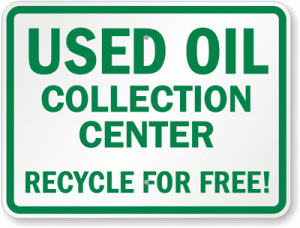 What is the difference between used oil and waste oil? In this short article find out the answer to this question and learn about the correct labels and signage needed to alert people of the differences.
What is the difference between used oil and waste oil? In this short article find out the answer to this question and learn about the correct labels and signage needed to alert people of the differences.
Find out everything about aerosols. Peek into the history of aerosols and read about the dangers aerosols pose.
This commonly found chemical can be uncommonly dangerous. Learn about the dangers of acetone and preventive measures to take while handling the chemical.
Anthrax: History and Hazards
Anthrax bacterium was discovered in 1875 by Robert Koch which won him Nobel Prize. Read the history and find out preventive measures to steer clear of the danger.
Benzene: History and Hazards
Get all the necessary information about Benzene here. Read through complete history of Benzene. Hazards of Benzene will help you better handle the chemical.
Beryllium Exposure Limit and Best Practices
Learn about Beryllium here before handling the hazardous chemical. We guide you through various exposure limits to Beryllium.
Minimize Hazards of Diesel Fuel Exposure
Diesel exhaust is hazardous to health—read through this informative post regarding hazards of diesel fuel exposure and stay safe while handling the material.
Abrasive Blasting Hazards
Explore the history, major health hazards, precautions required during abrasive blasting.
Asbestos: A Brief History
What is the nature of Asbestos? How dangerous is Asbestos? What is asbestosis? Get all your questions answered here. Also get a brief history of Asbestos.
Prevent Carbon Monoxide Poisoning
You cannot see or smell carbon monoxide. Understand symptoms of CO poisoning and act quickly when a leak happens.
Understanding food allergy bullying
As summertime comes to a halt, preparation for the new school year commences. Along with stocking up on notebooks, binders, and calculators, communities and schools must consider how they’re going to approach the different bullying trends that occur while classes are in session.
Workplace Safety
Safety management is an important role in any work environment. Our Infographic of OSHA’s list of most cited violations will shed some light on important topics to follow to ensure your workforce stays safe.
MySafetySign, Your Unofficial Partner in Compliance
Find out what MySafetySign can do for you in staying compliant with regulation and maintaining a good safety and health program for your employees.
Slip, Trip, and Fall Factors, Statistics, and Overview
The risk of slipping, tripping, or falling surrounds us. This colorful article presents data and statistics about STF hazards and reveals that the way we walk is correlated to our likelihood to be affected.
Common Slip, Trip, and Fall Hazards in the Workplace
STF (slip, trip, fall) hazards are extremely prevalent in the workplace. From the restaurant industry to the construction industry, find out what kind of hazards may surround you at your workplace.
How Floor Safety Signs Help Prevent Slips, Trips, and Falls
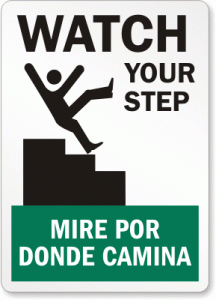 Trips, slips and falls make for 15% of the total accident fatalities. Decrease this number by warning people of slippery floors with floor safety signs.
Trips, slips and falls make for 15% of the total accident fatalities. Decrease this number by warning people of slippery floors with floor safety signs.
Why wear hard hats? Do they really help protect us? This informative article explains OSHA standards for helmets and describes the various types of helmets available and their purposes.
Confined Space Rules – Reducing the Danger for Workers
Confined spaces pose a high risk to the lives and health of workers who operate in them. Every year, almost 100 people are killed in confined spaces in the US. This article outlines the regulations, causes, the risks of confined space accidents, and the preventative measures that can be taken to lessen risks.
Stop Back Injuries with Lifting Signs
More than a million workers suffer back injuries each year. Read the initiatives OSHA has recommended for workers to keep safe in the workplace and help prevent back injuries.
The Extreme Dangers of Arc Flashes
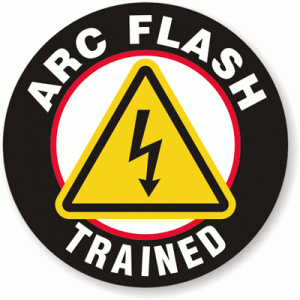 Arc flash injuries are not only common and extremely dangerous, but they can also be fatal. Learn about the different dangers associated with arc flashes and the warning messages that can be installed around the workplace to indicate arc flash dangers.
Arc flash injuries are not only common and extremely dangerous, but they can also be fatal. Learn about the different dangers associated with arc flashes and the warning messages that can be installed around the workplace to indicate arc flash dangers.
Considering that 35% of the U.S. population speaks Spanish, the need for bilingual signs are helpful, if not necessary.
Excavation and Trenching: What Are the Dangers?
The risks of excavation and trenching are numerous: cave-ins, dangerous gases, falling objects, drowning hazards, and more. Learn how to effectively avoid and recognize these hazards.
Protect Workers from Heat Illness
Prolonged exposure to hot conditions can cause workers’ body temperatures become dangerously elevated, a condition called heat illness. Read all facts here.
Cold Stress: Identify Types Before You Treat Affected Workers
Extreme cold can be dangerous for workers—find out about different types of cold stress (hypothermia, frostbite, and trench foot) here.
Falls Remain the Top Risk in the Construction Industry
Falls are a major danger in the construction industry. kickstart your fall safety program today.
Varying Degrees of Exposure to Ionizing Radiation
Workers in the healthcare and veterinary industries are especially affected by radiation. Learn about varying degrees of exposure to ionizing radiations like X-rays.
“Electrical Hazards: Don’t Get Shocked, Plan in Advance”
Click to read about electrical hazards in workplaces. Take suitable preventive measures against electrical shocks.
How to Avoid Occupational Exposure to Bloodborne Pathogens
It’s important to study about bloodborne pathogens if you are subjected to occupational exposure. Follow simple rules to stay safe.
Oxygen Enriched and Oxygen Deficient Atmospheres
High or low concentration of oxygen in the atmosphere can be lethal. Understand the differences
Stinging Insects Allergy
Insect stings can be lethal if you’re allergic and cause a hazardous distraction if you’re working around physical hazards. Learn how to prevent insect stings and stay safe around hives.
Noise Exposure Limits
What does noise really look like. Real life examples and different intensities of noise help you understand what’s unsafe to hear.
First Aid Symbol
Trace the origin of the first aid symbol and the journey of its lookalike—the Red Cross symbol.
History of the Skull & Crossbones and Poison Symbol
We reveal the mystery behind the ubiquitous Skull and Crossbones symbol and time travel to three periods in history.
Crane Safety Signs: Hand Signals in the Workplace
Hand gestures are used everywhere to communicate everything. Find out how crane operators identify hand gestures to move a mammoth crane in all directions.
High Voltage
What does high voltage mean, and why should you care?
Health and Safety Industry Survey 2014
In our Health and Safety Industry Survey 2014, find out about most overlooked health and safety concerns in a workplace and what stops safety professionals from carrying their responsibilities efficiently.
Health and Safety Industry Survey 2015
In our Health and Safety Industry Survey 2015, we discover the key to motivating health and safety practices and why safety professionals see staff as a barrier to safety.
Forklift Sings – ‘Tame the Beast’
Of course forklift signs are crucial to safety of operators and pedestrians. But just how important are they?
Truckers! Gear Up Your Driving With Truck Signs
Truckers are five times more likely to get into an accident than an average worker. Learn how Truck Signs can help protect heavy-vehicle operators.
Die-Cut Fire Extinguisher Stickers & Signs
A quick guide on installing a reflective Fire Extinguisher Sign on glass cabinets.
Radiation Labeling & Safety
Learn about the history of the radiation symbol and the application of radiation in different industries.
Floor Stencil Instructions
Understand the Do’s and Don’ts of using floor stencils to prolong shelf life and produce better results.
The Science of Photoluminescent Signs
Why do signs shine differently during the day and night? Learn about what causes photoluminescent signs to shine differently in different light conditions.
Glow-In-dark Fire Extinguisher Sign Specifications
Learn about the standards for photoluminescent signs and how our GlowSmart™ signs exceed these specifications.
Safety Checklist: Forklift Battery Charging Areas
Battery charging is extremely hazardous and OSHA lays clear rules about how you should do it. Keep this checklist handy when you’re working with forklift batteries.
Crane Inspection Checklist
Don’t waste time in reading bulky manuals for inspecting overhead and gantry cranes. We’ve simplified OSHA 20 CFR 1910.179(j) for you in this post.
Guide to Inspect Ladders and Work Safely on Them
Falls from ladders make up 20 percent of all fall injuries and fatalities in general industry. Inspection is crucial before you start working on ladders. Follow this handy guide to inspect and operate on ladders safely.
Different Types of Heat Stress
Heat stress takes various forms in heat-related illnesses like heat stroke, heat exhaustion, heat cramps, and heat rashes. Let us look at all types of heat stress in detail.
How to inspect scaffolding safety
Scaffolding should be inspected periodically as unsafe scaffolds can collapse due to instability or overloading.
Forklift Safety Inspection: Quick Guide
Here’s your complete A to Z guide on Forklift Safety Inspection. Have all your questions regarding “forklift inspection requirements” answered here.











